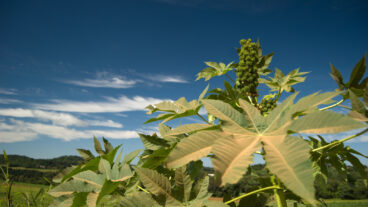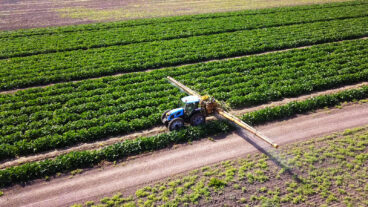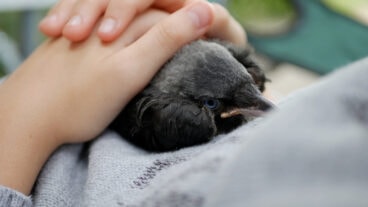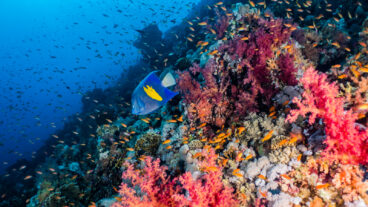Israeli microbiologist Rivka Ofir has been collecting the seeds of Israel’s hardy desert plants to grow in planters in large quantities.
A first time visitor descending the winding road from Arad towards the Dead Sea to the Arava Valley may well wonder how anyone can survive in this barren environment. Located between the towering Edom Mountains of Jordan and the hills of the Negev, much of the Central Arava is still pristine wilderness, but you soon catch sight of the greenhouse settlements, iridescent in the winter sun.
The Arava Valley stretches for 163 kms (111 miles) along the Jordanian border from the tip of the Dead Sea in the north to Eilat in the south. This extremely arid zone, with barely two inches of rain annually, is home to hundreds of extraordinarily hardy plants – some of which have shown evidence of possessing properties that can fight cancer, reverse nerve cell degeneration and combat fungi in crops.
Collecting, classifying, desiccating and carrying out experiments on these desert plants has become the passion of molecular biologist Dr. Rivka Ofir, who lives and runs her lab in Hatzeva in the central Arava. Ofir has managed to collect a “library” of 250 desert plants, 40 to 50 of which are specific to the Arava rift. “There is a world-wide trend to re-examine traditional and folk remedies,” she says. “Most of the effective anti-cancer drugs have come from plants. As a molecular biologist I’m coming from the cell side not the plant side.”
“When you live in the desert and see these plants survive in such harsh conditions, you understand that they create something we cannot generate in the lab. In order to survive the plants must have a very sophisticated metabolism,” says Ofir. Perhaps, she imagined, these plants would be a good source for the “miraculous” compound she’d been looking for.
Ofir has already had some well-publicized success with lemon grass. As head of a Ben Gurion University of the Negev research team in 2005 she discovered that citral – the component that gives the lemony aroma and taste in several herbal plants such as lemon grass, melissa and verbena – kills cancer cells in vitro, while leaving healthy cells unharmed.
The compound activates the natural process called programmed cell death in the cancer cells. “Every cell in our body has a genetic code for how it will die,” explains Ofir. “The dead cell doesn’t damage the area, but is simply engulfed by other cells. In the case of cancer this genetic program malfunctions. I am looking for extracts that will activate this mechanism.”
The team discovered that a drink with as little as one gram of lemon grass contains enough citral to prompt the cancer cells in the test tube to commit suicide. Ofir is carrying out experiments on four additional plants in the “library” for anti-cancer actions.
“We’re really only beginning the research and it is on leukemia, not necessarily on other types of cancer,” cautions Ofir. When the findings regarding lemon grass were publicized, people began asking her where to find the herb, so she referred them to the farmer who grows it locally. “Perhaps it helps; it can’t hurt. But I discovered that someone is selling citral capsules on the Internet. This is, in my view, very irresponsible,” she states.
Extracts created from the plants (“like boiling up tea”) are screened for components which are a source of bio-activity that act on different models of disease. Ofir has also found plants in what she calls her “naive library” that have anti-fungal properties on the type of fungus which attacks a variety of crops.
Worldwide there is very little research being conducted on desert plants. Researchers aren’t keen about collecting desert plants because they are so scarce. “We don’t want to take too many plants out of the desert, and fewer and fewer people are familiar with these plants,” says Ofir who has been collecting seeds to grow in planters in large quantities.
Ofir and her husband Moshe live on Hatzeva, one of five moshavim, or collective settlements in the central Arava. Moshe is one of the founders of Hatzeva, which was originally an army agricultural outpost (Nahal). Rivka joined her husband here in 1972. “In the beginning we lived in tents. We were really pioneers.”
Hatzeva is right on the Jordanian border, which is marked only by a chain link fence with dirt roads on either side. This area has been peaceful for decades. “We have no fears for our safety – too bad all borders can’t be like this,” Ofir muses.
As you drive through the Arava today you see signs asking visitors to collect their garbage and trash and not to throw anything out of their cars. You know you’ve entered the “Clean Zone” region of the central Arava (“Arava Nekia”) where agriculture has flourished. Rubbish and litter such as plastic sheeting and empty packages are nowhere to be seen. At the end of the season, which is mid-summer, all crop wastes are incinerated and the plastic coverings of the hot houses removed for recycling.
The “clean zone” ensures that the area is as pest-free as possible in order to reduce the use of pesticides in growing fruit and vegetables that will meet stringent European standards.
Indeed, the Arava has become Israel’s major cultivation region for high-quality vegetables and flowers, grown in specially designed green houses standing in endless rows in military-like precision. The crops – tomatoes, sweet peppers, eggplants, melons, dates, flowers and various herbs are irrigated via drip pipes with semi-saline water. The water is a mixture from two underground sources: one relatively fresh, the other saline thermal water found at great depths. Ornamental fish are raised in the central Arava as well.
Each family living in the moshavim has 40 dunams for agriculture, and virtually all these lands host commercial enterprises. Successful farming these days requires education, and many Israeli farmers are indeed highly educated. Moshe Ofir, who has a master’s degree in economics, oversees the cultivation of the fruits and vegetables, which are marketed abroad through an Israeli company.
In 1998, after completing her doctoral thesis, Rivka was able to assemble the Research and Development Center of the Arava (“MOPE”) near Hatzeva with funding by the Ministry of Science. Twice a week she commutes the 200 kms (125 mile) round trip to the Ben-Gurion University of the Negev (BGU) in Beersheva.
The summer months in the Arava are mercilessly hot, some would say intolerable, but Rivka calls the region “a kind of paradise”. “Of course, there is air conditioning, one adjusts,” she says. “We are hoping to attract more people, especially young people who will want to live here.”
Some 700 families live in the area today, and hundreds of families have expressed an interest in moving to the Arava, but for the time being there are insufficient resources, especially water, to accommodate them.
Although none of the Ofir’s three children have remained in the Arava, Rivka has been working to recruit young people to live in the Arava. “We decided that to enlarge the community we would try to absorb students working on advanced degrees, in partnership with BGU,” she says.
To date four BGU graduate students – all women – have moved with their families to the region to pursue their research at the R&D Center. They are all working on subjects that are tied to the singular character of the Arava. Tacked to one of the doors of the R&D center is a quote by the renowned anthropologist Margaret Mead: “A small group of devoted people can change anything in the world.”
“Living here really is a sign of devotion,” maintains Ofir.![]()
Slashdot It!![]()













